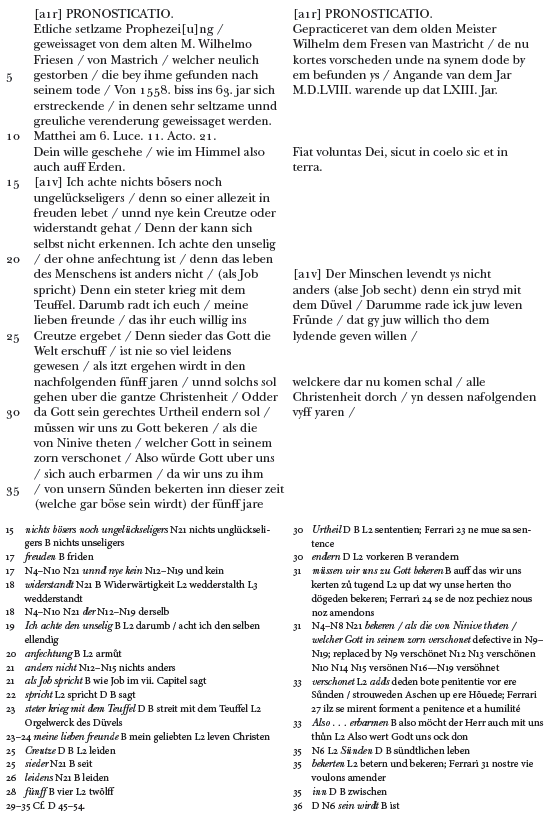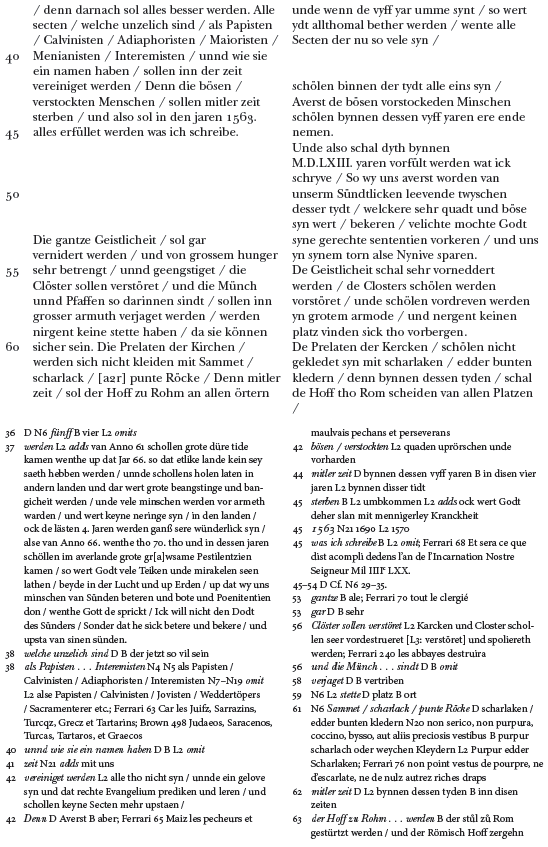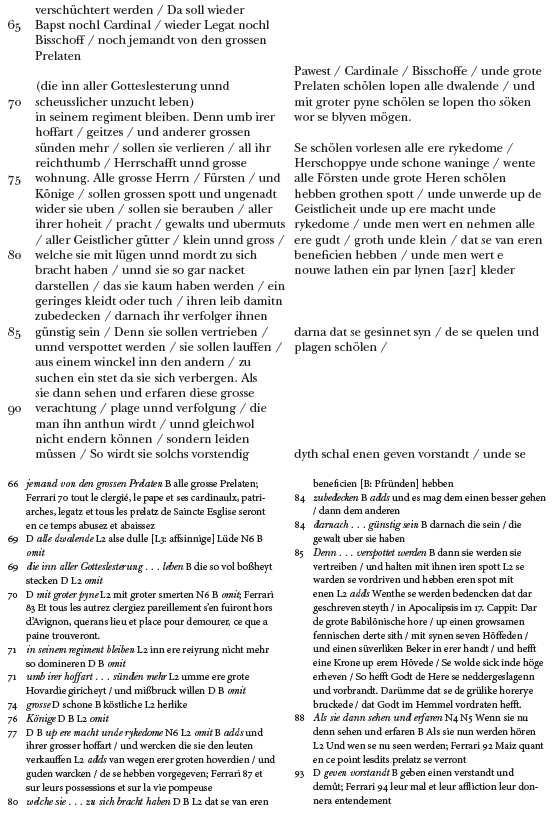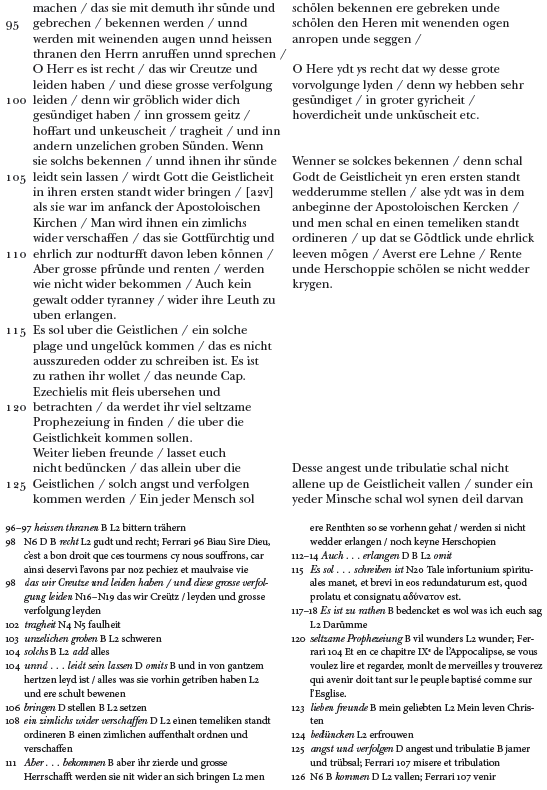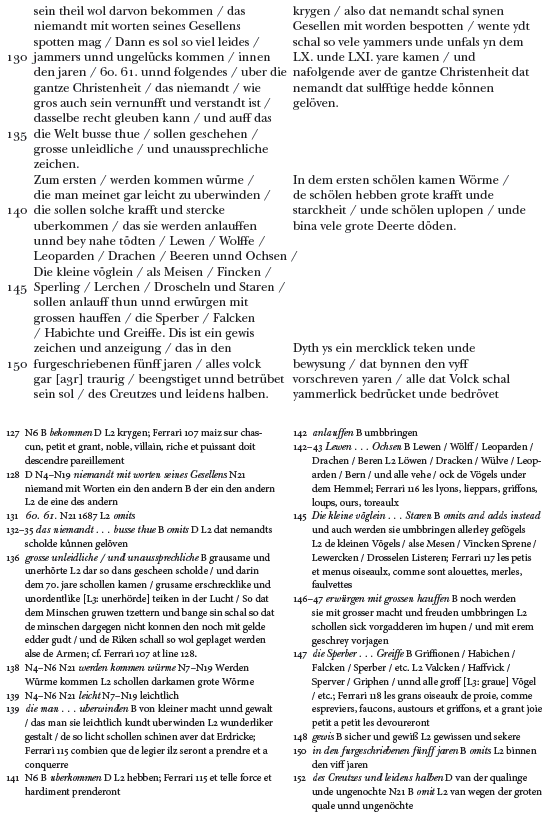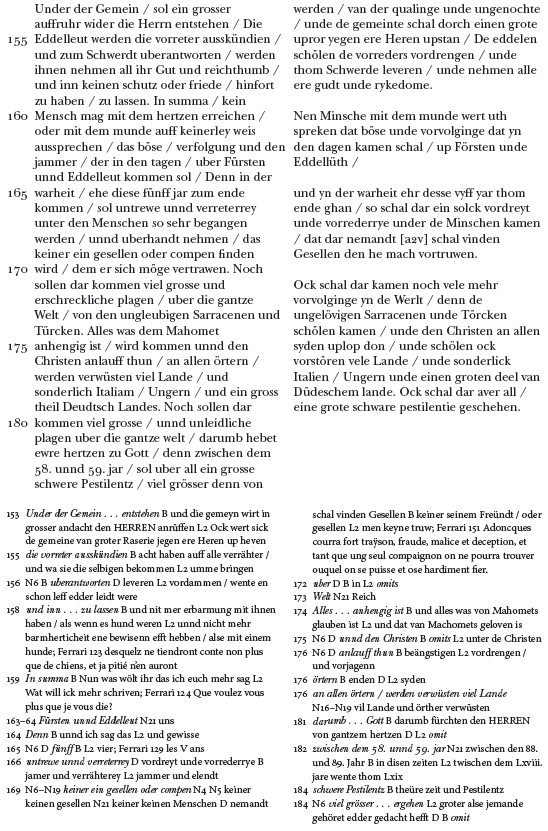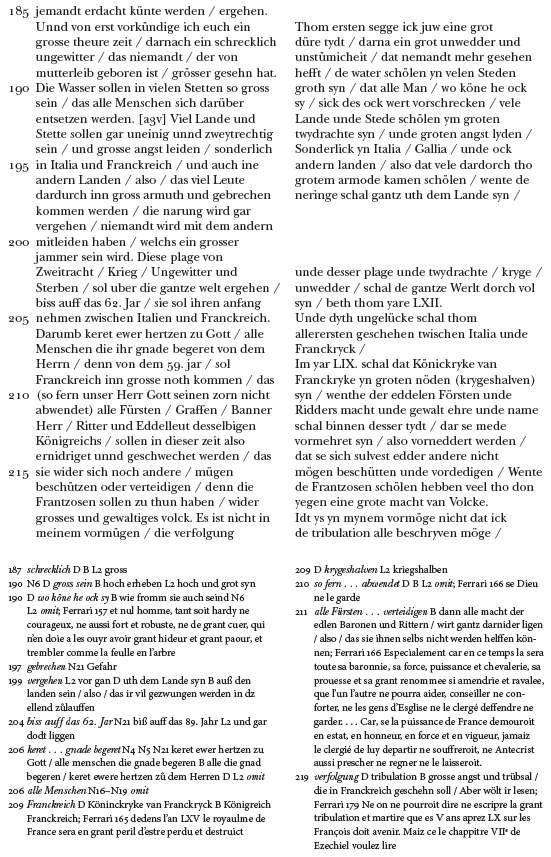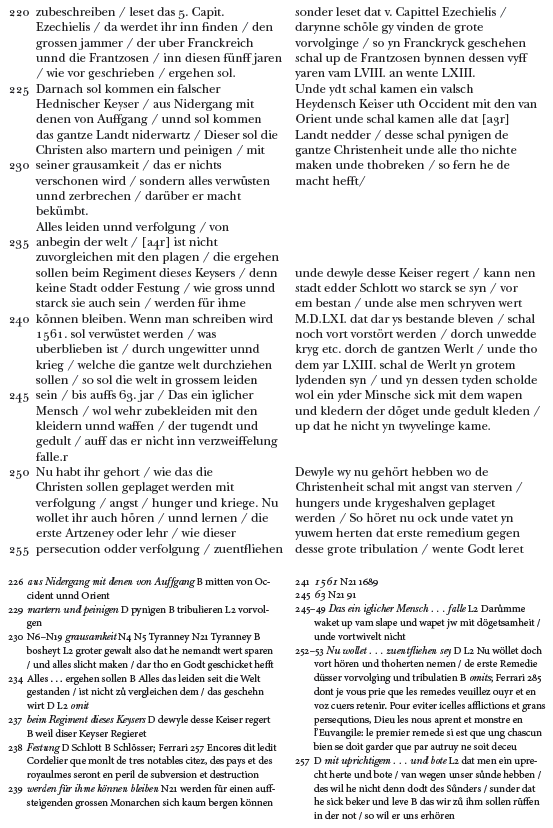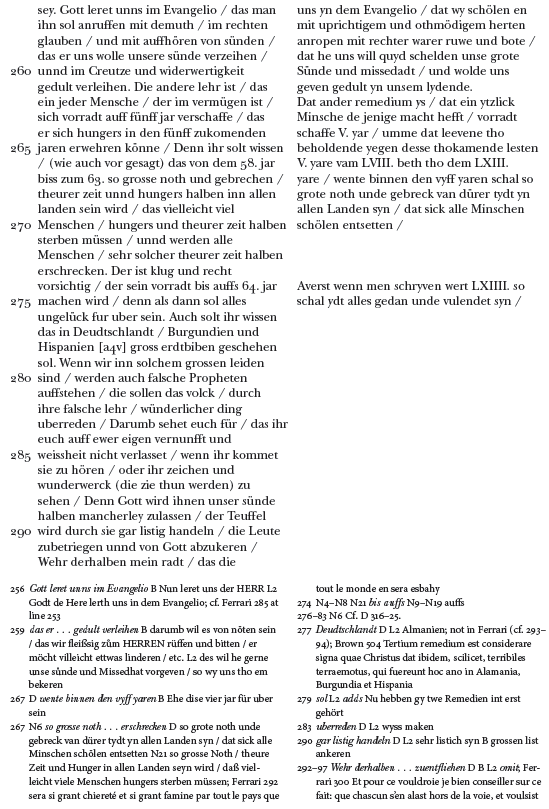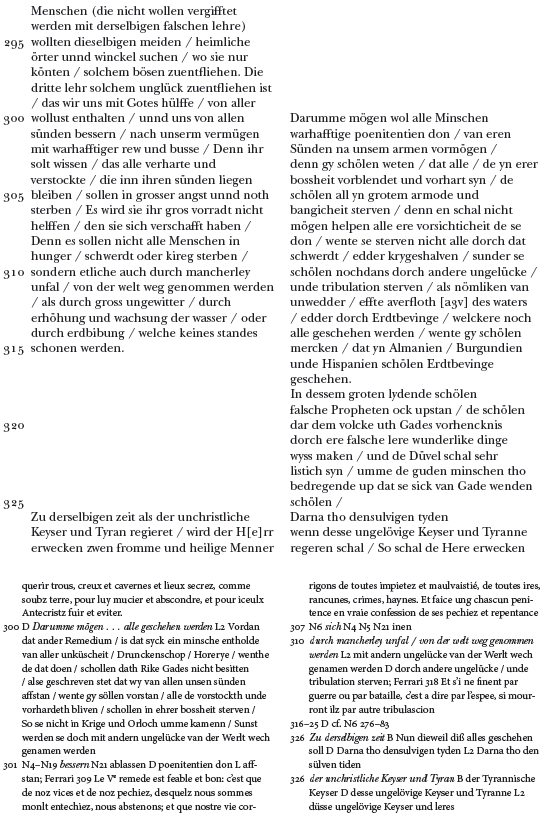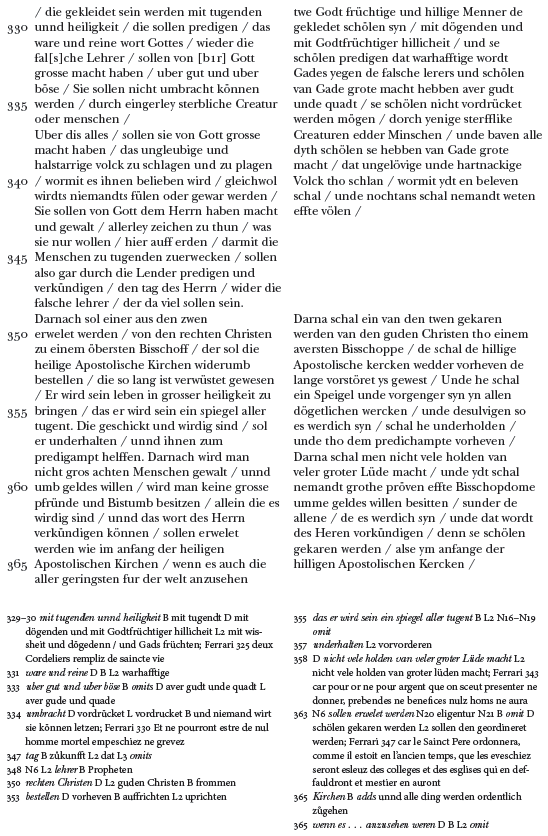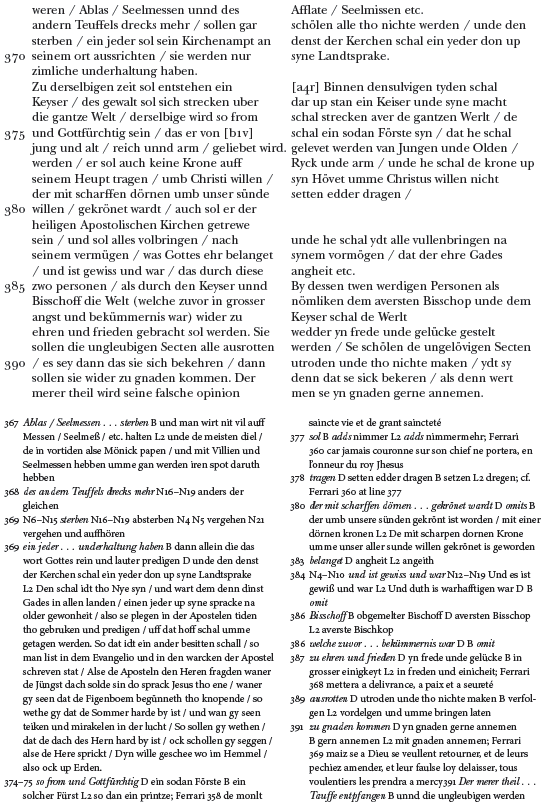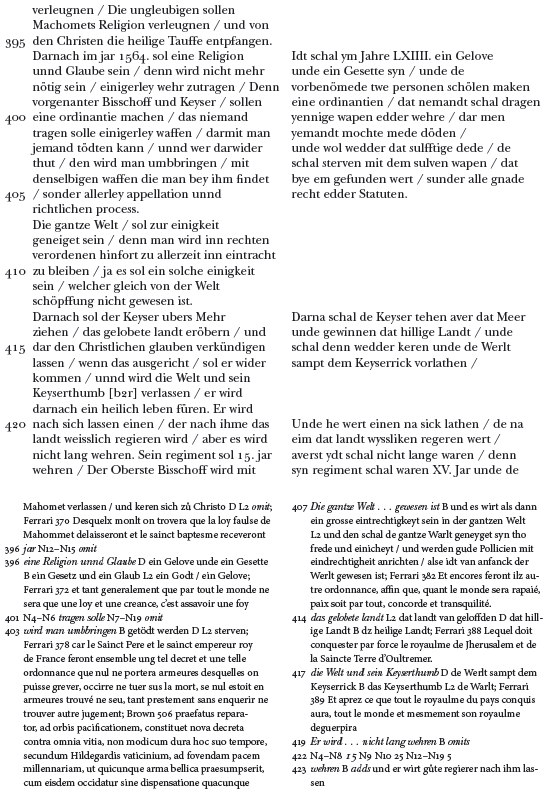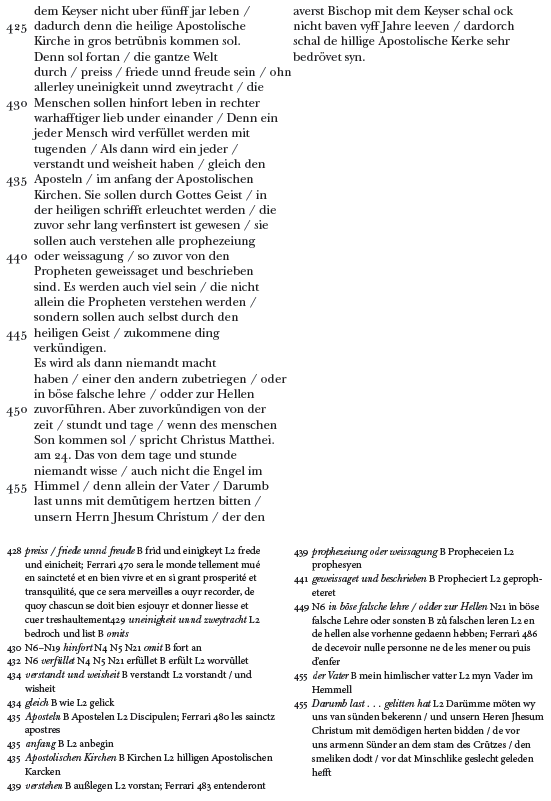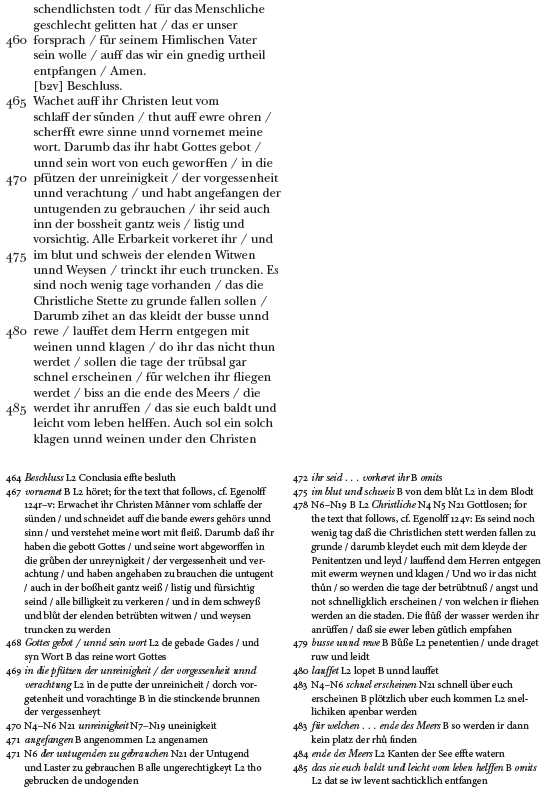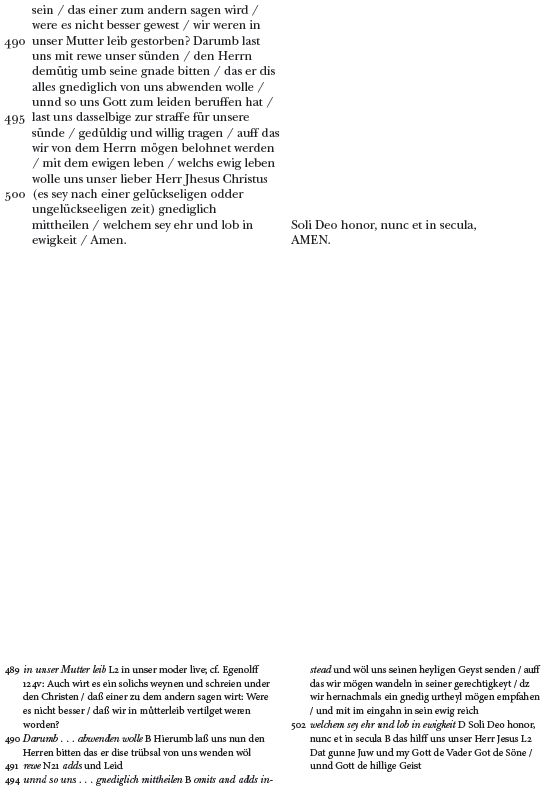APPENDIX 1
The First Prophecy of Wilhelm Friess
The following editions of “Friess I” and “Friess II” attempt to capture on paper the complex relationships between the various versions and editions of each text and its sources. As with the transcriptions of early modern printed texts in the notes, the editions presented here use modern values for i/j, u/v, and consonantal w. Round and tall s are not differentiated, umlauted vowels use modern orthographic conventions, and words begin with one capital at most. Spelling, capitalization, paragraph breaks, and punctuation are otherwise unchanged. Obvious typographical mistakes are corrected in square brackets. Abbreviations are expanded silently, and Latin digraphs are rendered as two letters. Blank lines are used to keep the texts roughly parallel to each other and do not reflect the layout of the printed editions.
The purpose of the editions presented here is to lay out the evidence for the textual historical arguments made in the chapters of this book (as well as the cases that call those arguments into question), to provide a convenient reading text, and to make available documents that would otherwise be obtainable only with considerable effort. These considerations influenced my choice of which texts to present here. For “Friess I,” digital facsimiles of the one B edition and two L editions are, at the time of this writing, readily available online, as are several of Georg Kreydlein’s editions. Readers interested in those editions will have no difficulty finding and reading them, so references to them are here relegated to the apparatus. The one edition of D is more difficult to find, however. For the N version, two early editions (N4 and N6) have equal textual historical value, as do the very late editions published in 1686–90 (N21–N26), but N6 has the additional significance of occupying a crucial place in the textual history of “Friess I,” as it was the parent of the many Kreydlein editions and has not suffered the numerous deletions of the seventeenth-century N editions. The following edition provides the text of both D and N6, and the notes are limited to the most significant variant readings in other editions. Orthographic or dialectal variants of the same word are not distinguished in the apparatus. Unless otherwise marked, the base lemma in the apparatus is drawn from N6. This is explicitly stated when the reading of N6 is compared with other editions of the same family. If not otherwise noted, the other N editions can be assumed to substantially follow N6, while L3 can be assumed to follow the readings of L2. Most omissions and discrepancies of N22–N26 as compared to N21 are not noted. Citations to “Ferrari” identify particular lines from Barbara Ferrari’s edition of the French Vademecum redaction in BAV Reg. lat. 1728, citations of “Brown” identify pages from Edward Brown’s 1690 edition of the Vademecum, and citations of “Egenolff” refer to the extract from Grünpeck’s Speculum as published by Christian Egenolff in his 1550 compilation of prophecies (VD16 P 5068).1
